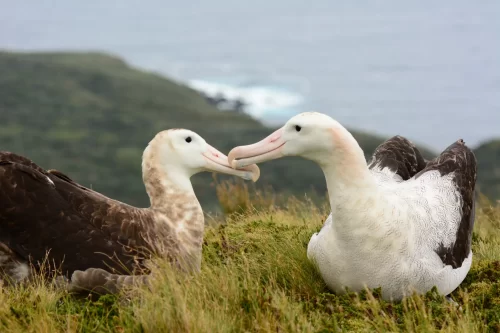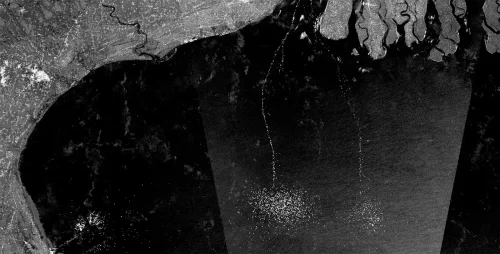A team of scientists investigate benefits of large marine protected areas
Standing at sea level, looking out at the ocean, you can only see about three miles (5 km) from shore. The largest marine protected areas (MPAs), which restrict fishing for conservation or fisheries benefits, span up to 200 nautical miles (370 km) from shore. Some are larger than France.
As you might imagine, protecting such vast expanses of the ocean can bring huge benefits to marine ecosystems. But the creation of large MPAs is a recent phenomenon that has just gained momentum over the last decade. Since most large MPAs are so new, there is an ongoing debate over which specific benefits we can expect from them and how they might affect fisheries.
To better understand how MPAs may influence our ocean, I worked with a team of scientists from Stanford University, the University of California Santa Barbara, and Virginia Tech to examine how industrial fleets respond to the creation of new MPAs. Our study, “Tracking the response of industrial fishing fleets to large marine protected areas in the Pacific Ocean,” recently published in Conservation Biology, points to important considerations for managers of large marine protected areas when it comes to what we should or should not expect MPAs to achieve.
Open questions surrounding large-scale MPAs
Advocates of large MPAs — those greater than 100,000 square km — note that these protected areas can help us reach global ocean protection targets, such as Aichi Target 11 from the Convention of Biological Diversity, which calls for 10 percent protection of the ocean (~ 7 percent is currently protected, according to Protected Planet). Large MPAs often protect some of the planet’s wildest ecosystems in ways that smaller parks can’t match, since the movements of far-ranging species such as sharks, tunas, and seabirds would dwarf smaller MPAs. Their large size is also thought to better protect biodiversity in the face of a changing ocean, as climate change may shift species ranges out of smaller MPAs.
I had the privilege of witnessing the benefits of marine protection firsthand, as the healthiest reefs I’ve ever seen were within the Pacific Remote Island Marine National Monument, a large MPA that spans nearly 1.3 million square km.
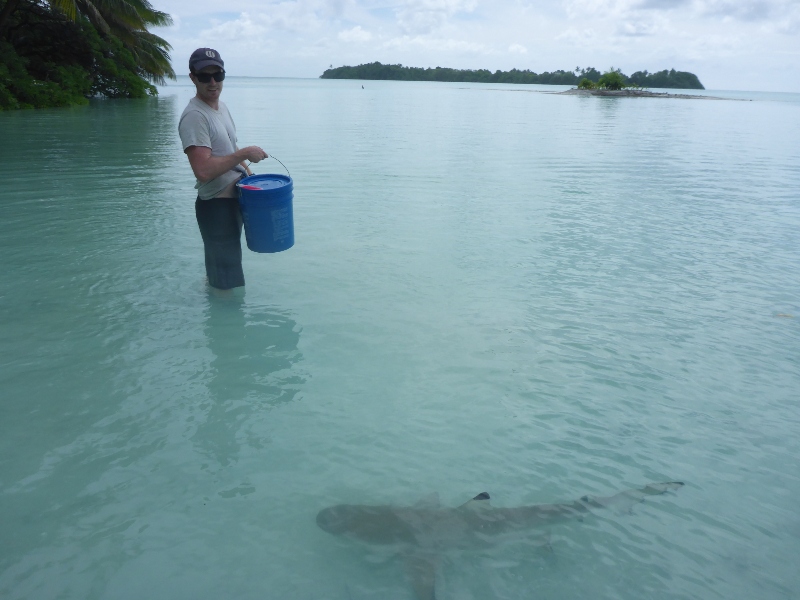
On the other hand, some critics of large MPAs claim that they protect swaths of water that weren’t very heavily fished to begin with. In their view, this means attention on those MPAs may be misplaced as greater impacts to biodiversity lie in more heavily fished areas.
The potential impacts of large MPAs on industrial fishing fleets are another key point of debate between MPA supporters and skeptics, as some argue that large MPAs may excessively harm the fishing industry or displace fishing effort onto other vulnerable ecosystems. Others question the ability of nations to adequately enforce fishing bans across such vast stretches of the ocean.
Fisheries response to MPAs
To better understand how fisheries respond to large MPAs, our research team used Global Fishing Watch data to track industrial fisheries in the Pacific Ocean. We measured industrial fishing effort for one year before and one year after the creation of five of the largest MPAs in the Pacific Ocean, and contrasted patterns with nearby “control” sites in national waters that allowed fishing at the time of the study (2012-2018).
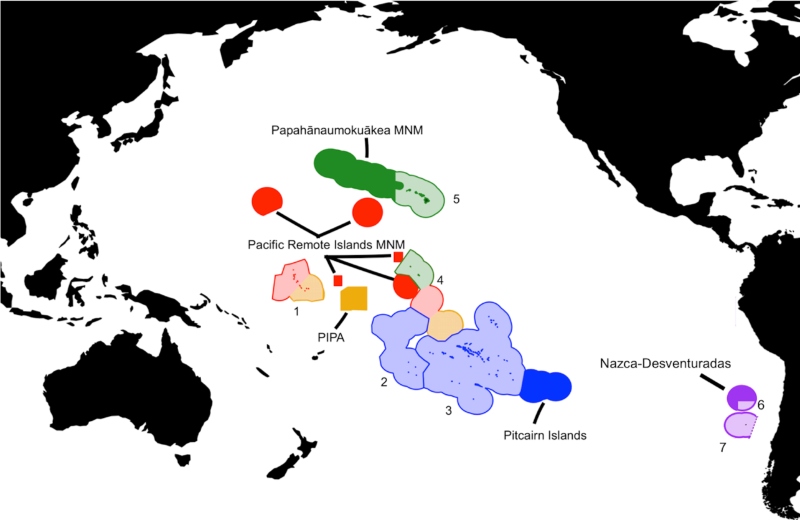
Our findings suggest that large MPAs are effectively protecting huge stretches of ocean from industrial fisheries, as we detected virtually no fishing inside MPAs. This might seem like an obvious result – to detect no fishing where fishing is banned – but the enforceability of large MPAs is often debated. Patrolling parks the size of France can be a real challenge, leading to our interest in confirming this claim.
Surprisingly, we also detected very little fishing within several MPAs before they received protection. This means that some MPAs do not reduce fishing pressure on local ecosystems, from what we can detect using AIS, but rather maintain impacts at very low levels relative to nearby waters that allow fishing. This is important to keep in mind when thinking about what we should and should not expect MPAs to deliver.
If a large MPA is created around a relatively unfished reef, a sudden increase in fish populations will not necessarily be expected since fishing pressure has not significantly decreased — there was not that much fishing to begin with. In that case, this MPA is helping to maintain or preserve that ocean ecosystem, ensuring that new fisheries – or other impacts such as deep sea mining, as MPAs often prohibit a wide range of industries – will not move into the region as our ocean changes. These can both be very important benefits.
Fishing activity before and after protection
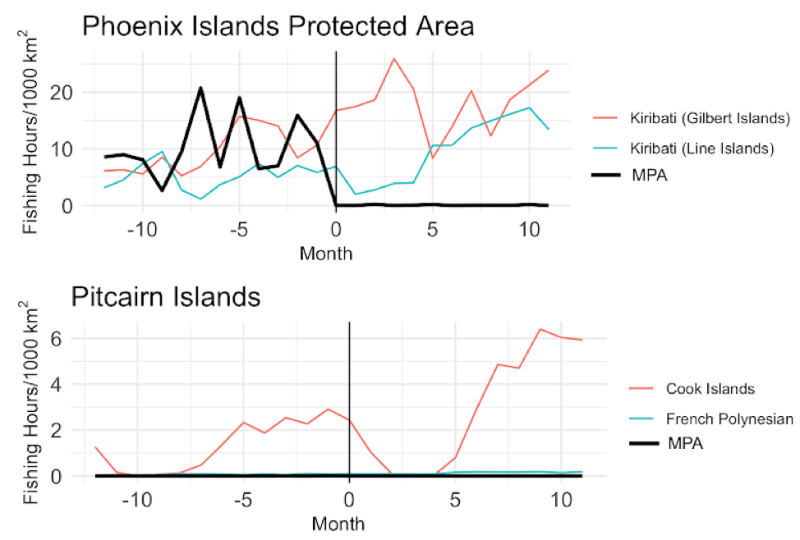
Our study used automatic identification system (AIS) data to track fisheries, which offered us high-resolution views of most commercial fishing activity in the region (approximately 50-75 percent of industrial fishing vessels). Since not all industrial vessels are required to use AIS — some vessels disable their transponders and small-scale fisheries typically don’t use vessel tracking — vessels engaged in illegal fishing within these MPAs may have gone undetected.
We also didn’t have access to other classes of data, such as socioeconomic data that could reveal trends in fishing profitability or data on vessels that may not use AIS, but we acknowledge that lots of benefits or impacts from MPAs can’t be tracked from space. On the whole, since tens of thousands of fishing vessels do regularly transmit AIS, this tool offered us a new view of how Pacific fisheries respond to MPAs.
More of the ocean has been formally protected in the last 10 years than in all preceding history, driven largely by the recent creation of large MPAs. High-resolution satellite data, emerging machine learning technology and publicly-available vessel tracking tools play a key role in revealing where and how we can best use MPAs to support the spectacular ecosystems and vital fisheries that support the Pacific.
To find out more, read the extended feature in Oceanographic.
Tim White, Ph.D., is a fisheries scientist at Global Fishing Watch

